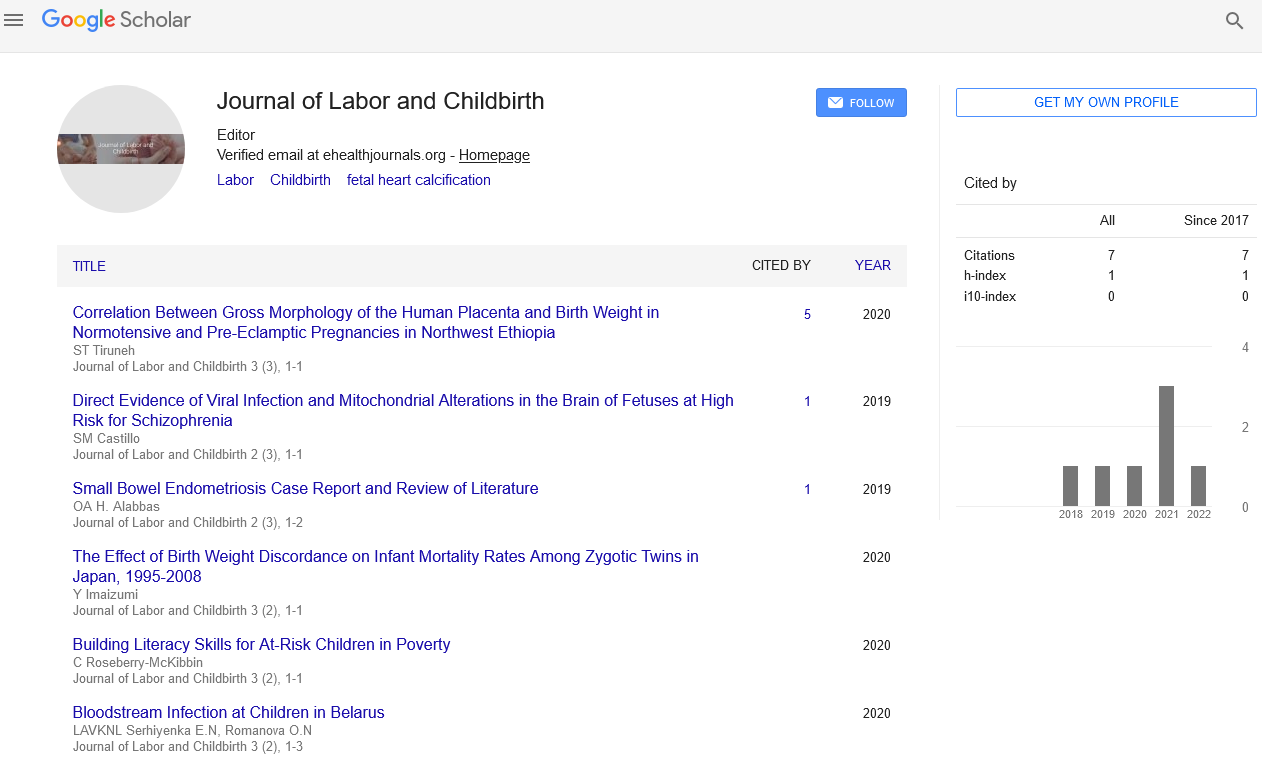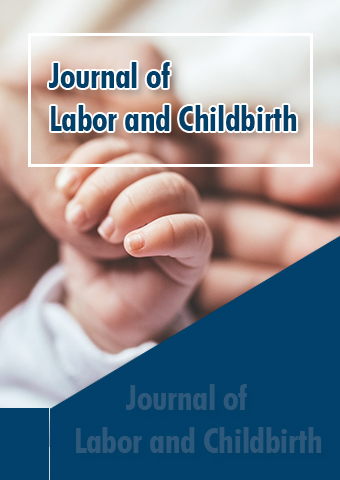Perspective - Journal of Labor and Childbirth (2023) Volume 6, Issue 5
The Critical Importance of Early Emergency Response: Saving Lives in the First Hour
- Corresponding Author:
- Par Nyman
Department of Gynecology,
Mike University,
Gavle,
Sweden
E-mail: par.nyman@statsvet.su.se
Received: 04-Sep-2023, Manuscript No. jlcb-23-118896; Editor assigned: 07-Sep-2023, PreQC No. jlcb-23-118896 (PQ); Reviewed: 21- Sep-2023, QC No. jlcb-23-118896; Revised: 03-Oct-2023, Manuscript No. jlcb-23-118896 (R); Published: 31-Oct-2023, DOI: 10.37532/ jlcb.2023.6(5).135-136
Introduction
Emergencies and disasters can strike at any time, often without warning, leaving communities vulnerable and individuals in need of immediate assistance. In these critical moments, early emergency response becomes a matter of life and death. The first hour following an emergency is often referred to as the “golden hour” in emergency medicine and response, as it represents a critical window of opportunity to save lives, minimize damage and mitigate the long-term impact of the event.
In this article, we will explore the significance of early emergency response and the strategies, technologies and initiatives aimed at optimizing this vital first hour. With a focus on disasters such as natural calamities, accidents and medical emergencies, we will underscore the importance of timely and effective action.
Description
The golden hour in emergency response
The concept of the golden hour is rooted in emergency medicine and rescue operations. It emphasizes the crucial nature of the first 60 minutes following an emergency event, where timely intervention can significantly improve the chances of survival and reduce the severity of injuries. While this timeframe may vary depending on the type of emergency, it generally holds true for many situations.
Natural disasters
In the case of natural disasters, such as earthquakes, hurricanes and tornadoes, the first hour is often the most critical. Rescue teams must quickly assess the extent of damage, locate survivors and provide immediate medical care.
After an earthquake, for instance, trapped individuals can only survive for a limited time without access to water, food or medical attention. Therefore, rapid response is essential to save lives and minimize long-term suffering.
Accidents
In accidents like car crashes, industrial mishaps or building collapses, the golden hour principle applies as well. Victims may suffer from severe injuries that, if not addressed promptly, could lead to complications or death. Immediate response by emergency services can make a significant difference in these situations. The faster they arrive and provide care, the better the outcomes for the injured parties.
Medical emergencies
Medical emergencies, such as heart attacks, strokes and severe allergic reactions, also underscore the importance of early response. In many cases, the golden hour is crucial for successful intervention. The administration of lifesaving medications, such as clotbusting drugs for heart attacks or clot retrieval procedures for strokes, must occur as quickly as possible to prevent irreversible damage to vital organs.
Strategies for early emergency response
To optimize early emergency response, various strategies and tactics are employed, depending on the type of emergency. Below, we will discuss some of the key approaches and best practices used to save lives and reduce the impact of disasters.
Preparedness
Preparedness is the foundation of early emergency response. Communities, organizations and individuals must have well-defined emergency plans in place. This includes establishing communication networks, organizing evacuation routes and ensuring that emergency supplies, like first aid kits and food provisions, are readily available. Training and public awareness campaigns are essential for ensuring that people know what to do in the event of an emergency.
Early warning systems
Early warning systems play a pivotal role in preparing for and mitigating the impact of disasters. These systems use technology and data to detect and predict potential emergencies. For instance, tsunami warning systems can alert coastal communities of impending threats, giving residents valuable time to evacuate. Weather forecasts and seismic monitoring provide essential information for timely decision-making.
Rapid deployment of first responders
The quick deployment of first responders, such as police, firefighters, paramedics and search and rescue teams, is essential in addressing emergencies effectively. Pre-positioned emergency response teams in high-risk areas can save precious time. Coordinated response efforts are critical, ensuring that personnel and resources are dispatched promptly to the affected areas.
Telemedicine and remote diagnosis
In medical emergencies, telemedicine and remote diagnosis are becoming increasingly important. These technologies allow medical professionals to assess and provide guidance to patients, even in remote or isolated areas. Realtime video consultations and diagnostic tools enable experts to make critical decisions within the golden hour, potentially saving lives.
Air and land transport
Air and land transport play crucial roles in early emergency response. Helicopters, ambulances and specialized vehicles can rapidly transport injured individuals to medical facilities, reducing the time it takes to receive life-saving care. Efficient transportation networks are essential for ensuring that assistance reaches those in need as quickly as possible.
Community resilience
Building community resilience is a long-term strategy that contributes to early emergency response. Resilient communities are better equipped to withstand and recover from disasters. They have effective local leadership, strong social networks and the capacity to adapt to changing circumstances. Community-based organizations and local volunteers also play a significant role in early response efforts.
Conclusion
The importance of early emergency response cannot be overstated. Whether in the aftermath of a natural disaster, a medical emergency or an accident, the first hour is often the most critical period for saving lives and reducing the long-term impact of the event. Effective preparedness, rapid deployment of resources and the use of advanced technologies all contribute to improving early response efforts.
As communities and nations continue to face an increasing number of emergencies and disasters, it is crucial to invest in resilience, preparedness and coordination. By doing so, we can ensure that the golden hour remains a window of opportunity for saving lives and minimizing suffering in the face of adversity.

